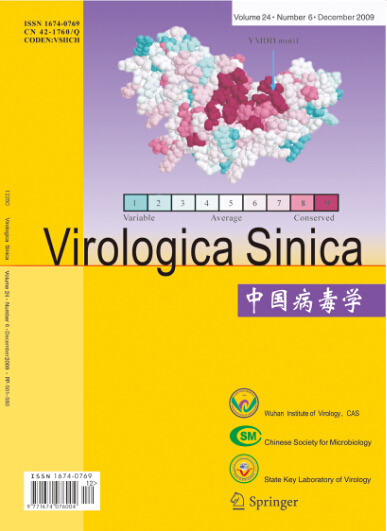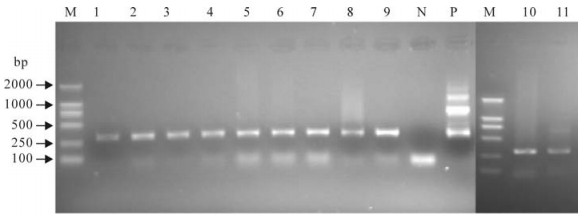-
Ahmad M A, Nazmi O H, Nadim M A, et al. 2008. Seroprevalence of, and risk factors for, peste des petits ruminants in sheep and goats in Northern Jordan. Prev Veter Med, 85 (1-2): 1-8.
doi: 10.1016/j.prevetmed.2008.01.002
-
Bailey D, Banyard A, Dash P, et al. 2005. Full genome sequence of peste des petits ruminants virus, a member of the Morbillivirus genus. Virus Res, 110: 119-124.
doi: 10.1016/j.virusres.2005.01.013
-
Diallo A, Minet C, Le Goff C G, et al. 2007. The threat of peste des petits ruminants: progress in vaccine development for disease control. Vaccine, 25: 5591-5597.
doi: 10.1016/j.vaccine.2007.02.013
-
Food and farming group, International Trade Core Function. 2007. Peste des petits ruminants (PPR) in China. International Disease monitoring, Preminary outbreak assessment. Department for Environment Food and Rural Affairs, VITT 1200/BT-China, 27 July 2007. (http://www.defra.gov.uk/animalh/diseases/monitoring/pdf/ppr-china080714.pdf).
-
Forsyth M A, Barrett T. 1995. Evaluation of polymerase chain reaction for the detection and characterization of rinderpest and peste des petits ruminants viruses for epidemiological studies. Virus Res, 39: 151-163.
doi: 10.1016/0168-1702(95)00076-3
-
Gargadennec L, Lalanne A. 1942. La peste des petits ruminants. Bulletin des Services Zoo Technoques et des Epizooties de I'Afrique Occidentale Francaise, 5: 16-21.
-
Haffar A, Libeau G, Moussa A, et al.1999.The matrix protein gene sequence analysis reveals close relationship between peste des petits ruminants virus(PPRV)and dolphin morbillivirus. Virus Res, 64: 69-75.
doi: 10.1016/S0168-1702(99)00080-5
-
Jiang M, Yang S B, Zhang N Z. 2007. The epidemic trend and controlling of peste des petits ruminants(PPR). Prog Veter Med, 28 (supplement): 88-91. (in Chinese)
-
Khan U Q M, Barrett T. 2008. Molecular based diagnosis of rinderpest and peste des petits ruminants virus in Pakistan. Int J Agri Biol, 10: 93-96.
-
Kwiatek O, Minet C, Grillet C, et al. 2007. Peste des Petits Ruminants (PPR) Outbreak in Tajikistan. J Comp Path, 136: 111-119.
doi: 10.1016/j.jcpa.2006.12.002
-
Muthuchelvan D, Sanyal A, Sreenivasa B P, et al. 2006. Analysis of the matrix protein gene sequence of the Asian lineage of peste-des-petits ruminants vaccine virus. Vet Microbiol, 113: 83-87.
doi: 10.1016/j.vetmic.2005.10.014
-
Pronab D, Sreenivasa B P, Barrett T, et al. 2002. Recent epidemiology of peste des petits ruminants virus (PPRV). Vet Microbiol, 88: 153-159.
doi: 10.1016/S0378-1135(02)00102-5
-
Senthil C K, Dhinakar G R, Thangavelu A, et al. 2007. Performance of RT-PCR-ELISA for the detection of peste des petits ruminants virus. Small Ruminant Research, 72: 200-208.
doi: 10.1016/j.smallrumres.2006.09.004
-
Yang S B, Zhao W H, Jiang M. 2008. Study of serological survey on the Peste des petits ruminants. Chin Anim Heal, 11: 63-65. (in Chinese)
-
Zhao W H, Yang S B, Jiang M, et al. 2007. Sequencing and analysis on the N、M、F and H genes of PPRV. Prog Veter Med, 28 (11): 8-11. (in Chinese)
-
Zhao W H, Zhu J B, Yao L T, et al. 2002. Cloning and sequencing of HN gene of a goose paramyxovirus isolate. Chin J Veter Sci Technol, 32: 10-13. (in Chinese)












